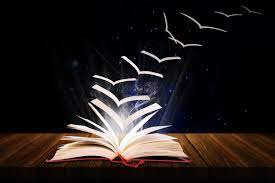Hello, I’m Emily, and I study the human experience. Humans are a social species; from the moment we’re born, our minds are instinctively straining to communicate. Communication is our survival mechanism. It is so steeped in our bloodstream that we long to communicate even with those we’ve never met. As Shakespeare famously put it in his 81st sonnet, “When all the breathers of this world are dead; you still shall live, such virtue hath my pen” (Lines 12-13). We grasp to be understood by those we are separated from by endless time and space. We invented legacies and started feverishly writing, painting, sculpting, making in order to build our own.
When it comes to words, I’ve always been an exemplary student. I’m entranced by the sound of them, by the music they make. They lodge themselves in my head, and the only way to get them out is to speak or write them, to visualize their shape and hear their sound. This love of words drew me to study the many ways words can carry meaning, even covertly; how they can say one thing and whisper another when you look closely. When it comes to communicating the human experience, one tends not to describe it simply. There is nothing simple about the human experience. There is nothing simple about each and every one of our lives. So, in most cases, those who wish to be truly understood must package meaning with wordcraft. I decipher literary techniques so that those who pour their life into writing can be understood.
That is literature. Literature is the collective human attempt to be known and understood. It’s a work of art one makes with the intent of communicating their worldview and history. This is what distinguishes it from, say, an instructional booklet: the booklet has a purpose, but that purpose is not for one to understand something about the author or others or even themselves. The message must be about what it means to be a human. The folktale of Little Red Riding Hood and the wolf, for example, passes on the feeling of being vulnerable, of being prey. Someone – rather, many someones – spun that tale one day to impart that shared experience to those who haven’t felt it, and thus a literary tradition was born. My work is to dissect literature like this to uncover what it culturally represents. I spend my time trying to know how literature connects us, what we might gain from it. I listen to the music of words and look for patterns woven in the letters that suggest there is more beneath the surface of the page.

